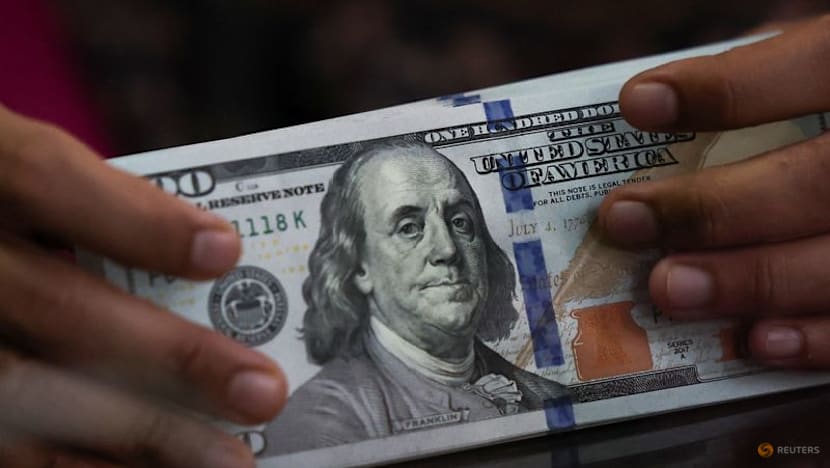Dollar rises against peers after US economic data

FILE PHOTO: An employee holds U.S. dollar bank notes at a money changer in Jakarta, Indonesia, April 9, 2025. REUTERS/Willy Kurniawan/File Photo
NEW YORK :The dollar strengthened against major peers including the euro and yen on Thursday following U.S. economic data, which would likely restrain the future interest rate cuts by the Federal Reserve.
The Commerce Department reported that U.S. gross domestic product rose by an upwardly revised rate of 3.8 per cent from April through June, higher than 3.3 per cent initially reported. Economists polled by Reuters did not expect the rate to be revised.
The dollar strengthened 0.58 per cent to 149.77 against the Japanese yen, rising to its highest level since August 1.
The euro hit a more than two-week low against the dollar, last trading down 0.66 per cent at $1.1659.
"I think everyone seems to have a bit of dollar shorts, and at least anecdotally, it added up to more than what the market thought," said Steve Englander, head of Global G10 FX Research and North America Macro Strategy at Standard Chartered Bank NY Branch.
"A year from now, our forecast for where interest rates are going to be is above the market because we think and recent data is showing that there's this real slip between the labor market softness and GDP and output numbers, which are in general bigger."
The dollar index, measuring the U.S. currency against six peers, rose 0.68 per cent to 98.50, hitting a two-week high. The dollar has been slightly higher since the Fed lowered interest rates last week, as expected.
Traders are anticipating at least two rate cuts in this year's remaining two Fed meetings, although comments from policymakers including Chair Jerome Powell indicate a lot will depend on upcoming economic data.
On Wall Street, the S&P 500, Dow Jones Industrial Average and Nasdaq Composite Index fell.
U.S Treasury yields rose across the board. For benchmark U.S. 10-year notes , the yield rose 2.5 basis points to 4.172 per cent. The 2-year note yield, which typically moves in step with interest rate expectations for the Fed, rose 6.3 basis points to 3.661 per cent
"Genuinely, there's an issue for the Fed about how fast you want to cut. Normally, when the labor market is this weak you would say it's all demand," Englander said. "And if demand is faltering, it calls for a rate cut. In this case, they have to keep in mind the possibility that there's a positive supply shock, which would mean that they should be careful about cutting."
More Fed officials continued commenting on Thursday about last week's decision to cut rates. Federal Reserve Bank of Kansas City President Jeffrey Schmid said the cut was needed to help ensure that the job market remains in a good place. Federal Reserve Bank of Chicago President Austan Goolsbee said he was not eager to do a lot more policy easing while inflation is above target and moving the wrong way.
Stephen Miran, the Fed's newest policymaker, continued on to press for sharper U.S. interest-rate cuts to prevent labor market collapse.
The dollar extended gains against the Swiss franc after the U.S. GDP news and as the Swiss National Bank kept key interest rates at zero, as expected.
The SNB also warned that U.S. President Donald Trump's tariffs had dimmed the Swiss economic outlook going into 2026.
The greenback hit a two-week high against the Swiss franc, strengthening 0.60 per cent to 0.8.
"Extraordinarily bearish events have taken place for the dollar over the past few months, yet the greenback has exhibited remarkable resilience. And this is increasingly a hotly debated topic among investors," Barclays analysts wrote in an investor note.













